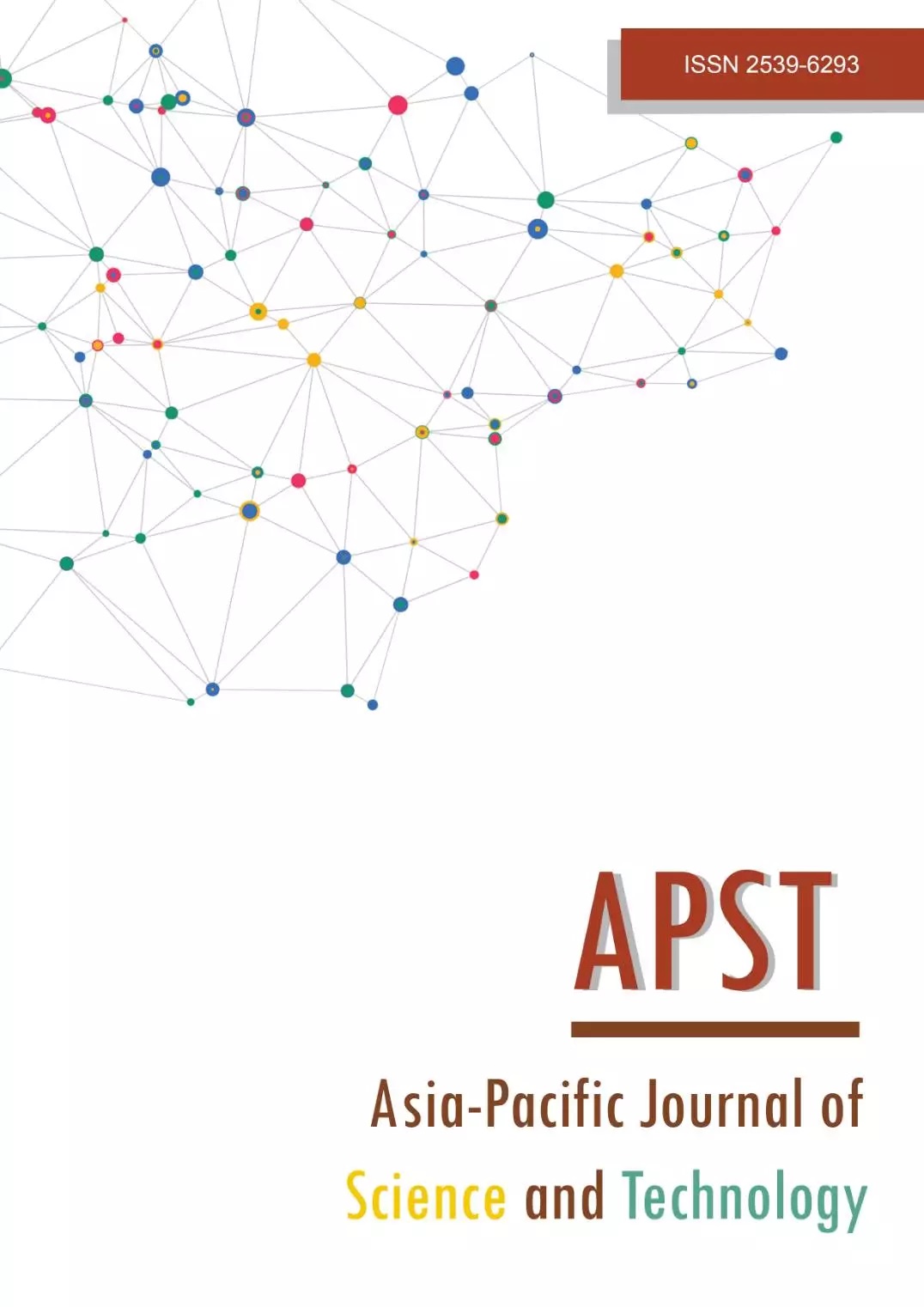R&D intensity and business performance: The case of Thailand’s maize seed industry
Main Article Content
Abstract
The seed industry has been accorded a high priority in Thailand’s policies toward the fourth industrial revolution. The competitiveness of the seed sector can facilitate farmers’ access to quality seeds at a reasonable price, stimulate growth in the agricultural economy and, overall, contribute to sustainable agriculture development. Developing the seed sector relies on many factors, an essential one being technology. Thus, the technological capability of seed companies is crucial as it enables a higher business performance, which increases and sustains the contribution of the seed industry to economic development. The paper’s focus on the maize seed industry draws justification on its export value being the highest of all seeds exported from Thailand. The industry is dominated by multinational companies (MNCs) while local companies are at the early stage of development. This paper compares research and development (R&D) investment and the business performance between MNCs (both foreign subsidiaries and Thai-parent) and local small and medium-scale enterprises (SMEs). The results show that MNCs have higher investment in R&D, both in capital investment and human resources, and perform better. With a smaller investment in R&D, local SMEs have less technological capability and lower business performance than MNCs. On the other hand, a local research company showed an outstanding performance on return on sales. These findings suggest that Thai companies have a high potential for improvement in technological capability and business performance. To achieve this, they require support from the government and academic institutions in human resource development and enabling regulatory framework.
Article Details

This work is licensed under a Creative Commons Attribution-NonCommercial-NoDerivatives 4.0 International License.
References
World Bank. Enabling the business of agriculture, https://eba.worldbank.org/content/dam/documents/eba/ THA.pdf [access 26 October 2021].
Napasintuwong O. Thailand’s maize seed market structure, conduct, performance. Future Food. 2020;8(2):33-47.
Poolsawas S, Napasintuwong O. Farmer innovativeness and hybrid maize diffusion in Thailand. Int J Agric Ext Educ. 2013;20(2):51-65.
Napasintuwong O. Development and competition of hybrid maize seed market in Thailand: The roles of public and private sectors. Trop Agric. 2017;94(4):418-433.
The Organization for Economic Co-operation and Development (OECD). Concentration in seed markets: potential effects and policy responses. 1st ed. Paris: OECD; 2018.
Napasintuwong O. R&D intensity and technological capacity in agriculture: a case of corn seed industry in Thailand. Asian Biotechnol Dev Rev. 2021;23(2):5-31.
Reichert FM, Zawislak PA. Technological capability and firm’s performance. J Technol Manag Innov. 2014;9(4):20-35.
Coombs JE, Bierly III PE. Measuring technological capability and performance. R D Manag. 2006;36(4): 421-438.
Kim M, Kim Je, Sawng Yw, Lim Ks. Impacts of innovation type SME’s R&D capability on patent and new product development. Asia Pac J Innov Entrep. 2018;12(1):45-61.
Stads GJ, Pratt NA, Omot N, Pham NT. Agricultural research in Southeast Asia: a cross-country analysis of resource allocation, performance, and impact on productivity, https://www.asti.cgiar.org/publications/s
oea-ag-regional-report-2020 [accessed 26 October 2021].
Stads GJ, Omot N, Bandrapiwat I, Pratt NA, Pham NT, Thaingam J. ASTI Thailand country brief, https://www.asti.cgiar.org/thailand [accessed 26 October 2021].
Cornejo FJ, Just RE. Researchability of modern agricultural input markets and growing concentration. Am J Agric Econ. 2007;89(5):1269-1275.
Hashmi A. Competition and innovation: the inverted-U relationship revisited. Rev Econ Stat. 2013; 95(5):1653-1668.
Guerra RM, Camargo ME. The role of technological capability in the internationalization of the company and new product success: A systematic literature review. Internext. 2016;11(1):49-62.
Spielman DJ, Kolady DE, Cavalieri A, Rao NC. The seed and agricultural biotechnology industries in India: an analysis of industry structure, competition, and policy options. Food Policy. 2014;85:88-100.
Yu G, Kim S, Choi J, Kwon S, Kim C. Horticultural technology trends in the Korean seed industry. Horticult Sci Technol. 2020;38(2):119-129.
Singh KK. Intellectual property rights in agricultural biotechnology and access to technology: a critical appraisal. Asian Biotechnol Dev Rev. 2016;18(3):3-23.
Lipczynski J, Wilson J. Industrial organization: an analysis of competitive markets. 1st ed. Essex: Pearson Education Limited; 2001.
Thailand Department of Business Promotion. Data warehouse 2020, https://datawarehouse.dbd.go.th [accessed 26 October 2021].
Thai Seed Trade Association. Registered seed database 2015, https://thasta.com/ [accessed 26 October 2021].
Alston JM, Pardey PG, Ruttan, VW. Research lag revisited: concepts and evidence from U.S. Agriculture. The 2008 Economic History Association Meetings; 2008 Sep 12-14; Austin, United States. Cambridge: Cambridge University Press; 2008. p. 1-63
Thirtle C, Piesse J, Schimmelpfennig DE. Modeling the length and shape of the R&D lag: an application to UK agricultural productivity. Agric Econ. 2008;39:73-85.
Grillitsch M, Schubert T, Srholec M. Knowledge base combinations and firm growth. Res Policy. 2019;48(1):234-247.
Paiva T, Maximiano R, Coutinho P. R&D collaboration, competitiveness development, and open innovation in R&D. J Open Innov Technol Mark Complex. 2020;6(116):1-18.
Matricano D. The effect of R&D investments, highly skilled employees, and patents on the performance of Italian innovative startups. Technol Anal Strateg Manag. 2020;32(10):1195-1208.
Kim M, Kim JE, Sawng YW. Impacts of innovation type SME’s R&D capability on patent and new product development. Asia Pac J Innov Entrep. 2018;12(1):45-61.
Dalberg Asia. Case study: investment in sustainable seeds for sustainable agricultural intensification, https://hdl.handle.net/10568/115261 [accessed 26 October 2021].
Srinivasan CS. Plant variety protection in developing countries: a view from the private seed industry in India. J New Seed. 2004;6(1):67-89.
Spielman DJ, Kennedy A. Towards better metrics and policymaking for seed system development: Insights from Asia's seed industry. Agric Syst. 2016;147:111-122.


